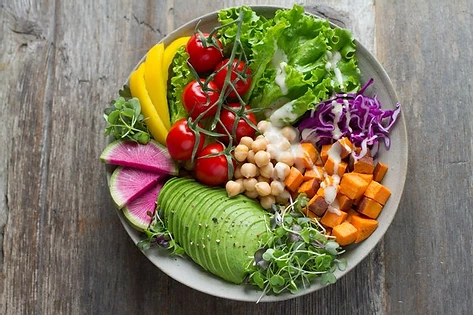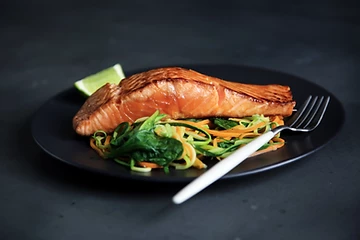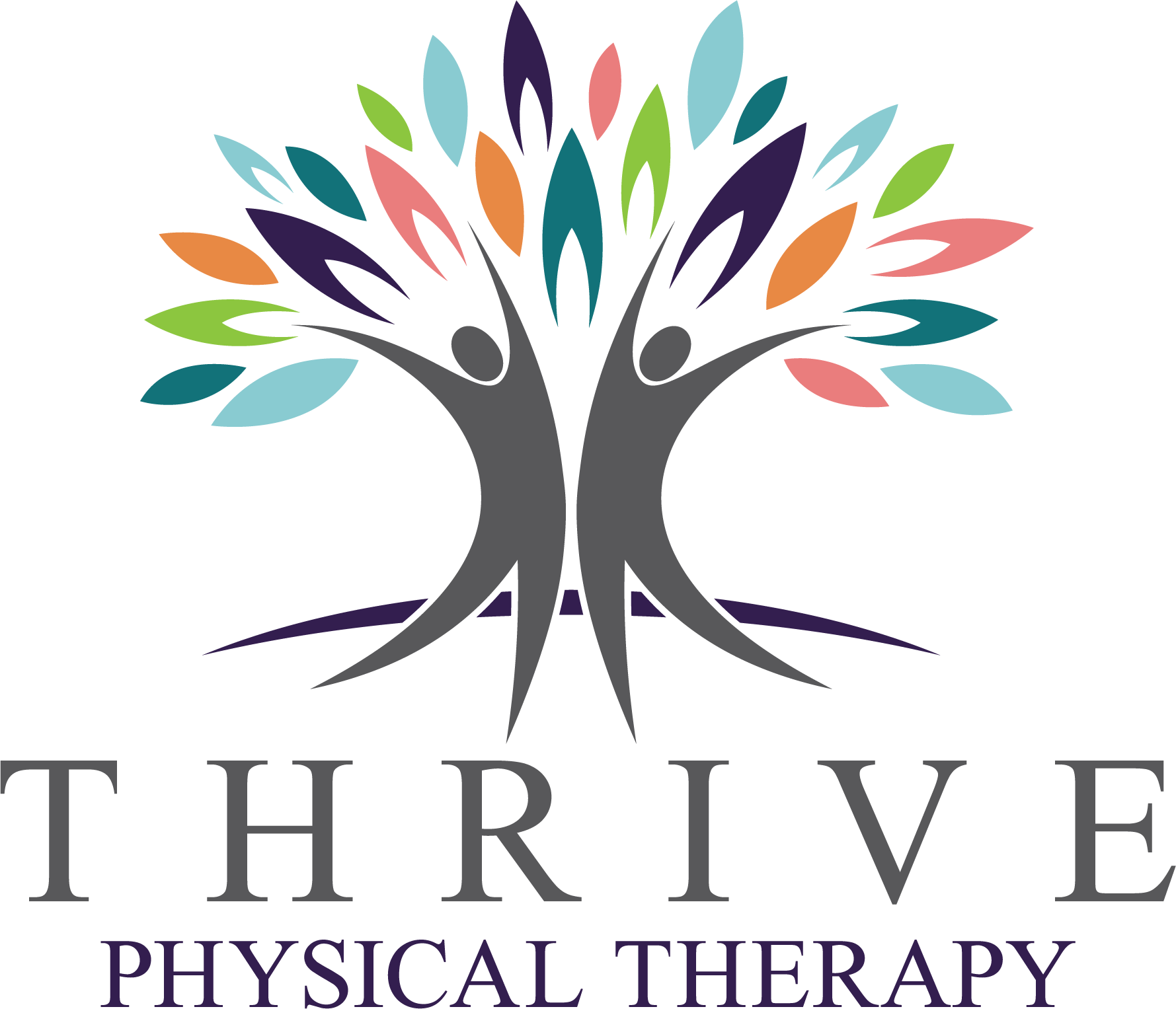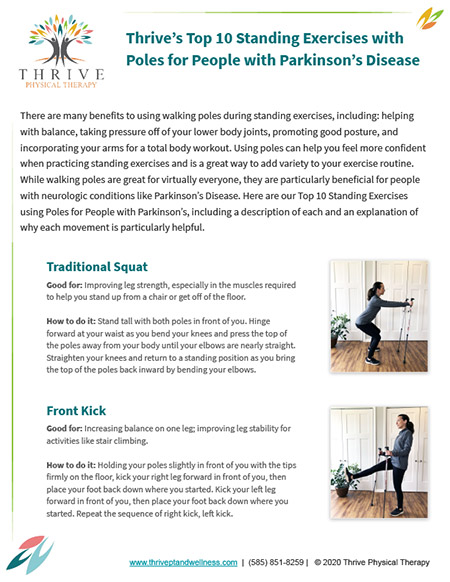When I talk about food with my clients, I often use the gas tank metaphor. Just like your car will not drive on an empty tank of gas, your body cannot move well if it is not fed. And it’s important to not just “gas up” on whatever is filling, convenient, and easy – but, to choose food based on thinking of it as fuel, medicine, nourishment, and a gift you offer to yourself to thrive
So, what does food as medicine look like? For most people, a Mediterranean way of eating is a great philosophy to help focus on foods that will give you the most nutrient density per bite. This style of eating emphasizes plant-based foods and healthy fats. A Mediterranean-style diet has health benefits for both your heart and brain and is associated with lower rates of Parkinson’s disease. Foods to enjoy every day include fruits, vegetables, beans, herbs, spices, nuts, whole grains, and healthy fats such as olive oil. Fresh fish and seafood are the preferred sources of animal protein – I’ll discuss that later in this blog post. The MIND Diet, which is a combination of a Mediterranean Diet and the DASH Diet (Dietary Approaches to Stop Hypertension), has been found to substantially slow cognitive decline with aging. If you are interested in learning more about this way of eating, I recommend checking out the books below:(Thrive participates in the Amazon affiliate program and may earn a commission – at no additional cost to you – if you choose to purchase any of these recommended books using these links.)
When thinking about the best way to eat, I focus on a few key concepts:
Eat the Rainbow
I don’t think anyone needs to be convinced that fruits and vegetables are good for you, so I won’t spend too much time talking about how chock full of antioxidants, vitamins, minerals, and fiber they are.
One interesting and helpful thing to know, however, is that the more richly-colored fruits and vegetables are, the higher the levels of phytonutrients they contain. Phytonutrients are essential for maintaining the normal functions of the human body. Dark leafy greens, vibrant jewel-colored berries, and juicy red tomatoes are my personal favorites.
When it comes to choosing fruits and vegetables: fresh is best. And when fresh isn’t possible, choose frozen over canned; canned food may contain unhealthy additives and preservatives, and even be contaminated by BPA or aluminum.
When choosing your fruits and vegetables, it is also important to consider how heavily they have been sprayed with pesticides. Unfortunately, pesticides are not only commonly used, but they can also seriously damage our health. For example, Paraquat, a very commonly used chemical sprayed on crops in the US (although banned in other countries), is associated with a higher risk of developing Parkinson’s. When choosing your fruits and vegetables, it is therefore helpful to have an idea of which and how much of these potentially harmful chemicals are on the food we introduce into our bodies.
This can be a lot to keep track of; fortunately, much of the work has been done for us! My go-to reference comes from the Environmental Working Group, which puts out an annual list for pesticide residue content in fruits and vegetables (it does change from year to year). This list can help you prioritize which foods to buy organic (the “dirty dozen”) and which ones contain the lowest amount of pesticides (the “clean fifteen”). Keep in mind that even organic produce is often sprayed with chemicals and should be washed prior to enjoying.
Check out these lists here:
The Dirty Dozen
The Clean Fifteen
Nutrition from the Sea
When it comes to fresh fish and seafood, pay attention to the type of fish and to how it is cooked. You’ll want to seek fish that are low in toxicity and avoid preparations that include frying. A helpful acronym to remember when choosing your fish is SMASH:
 S=salmon
S=salmon
M=mackerel
A=anchovies
S=sardines
H=herring
SMASH fish are best because of their high content of brain healthy omega-3 fats and their low mercury levels. Omega-3 fats consist of long-chain fatty acids and are important for cell membrane stability, cellular function, and cell to cell communication.
Fats as Friends
Fat has gotten a bad rap, but it’s an essential component to include in our daily diet. However, not all fats are created equal, nor handled the same way in the body. Healthy fats are vital for brain function, the absorption of some vitamins, and lowering blood cholesterol levels. Trans fats, on the other hand, are highly regarded as bad for you (avoid these by staying away from any foods that list partially hydrogenated oil in their ingredients). Foods that contain trans fats include fried fast food and vegetable shortening. Monounsaturated and polyunsaturated fats are much healthier and can be found in olive oil, avocados, nuts, and seeds
Spice Up Your Life
Adding herbs and spices to your food is a great opportunity not only to add flavor, but also to add a ton of nutrients! The typical American diet is deficient in these healthy little powerhouses compared to other global cuisines. Take cinnamon for example: Just adding 1 tsp to your morning oatmeal or cup of tea can get your day started with a big boost of antioxidants and polyphenols, which protect the body against inflammation and oxidative stress. A few other fantastic options to consider spicing up your plate/bowl/cup are turmeric and cloves. Add some green color, extra flavor, and lots of extra nutrition by chopping up some extra herbs in your savory dishes; some potent and easy-to-grow-yourself ones include basil, parsley, and thyme.

Mindset Matters
Rather than thinking about foods you “should not” or “cannot” eat, try thinking about adding healthy options into the rotation of foods you typically prepare. In time, the healthier choices will crowd out the less nourishing ones and pretty soon your plate will be full of delicious, nutrient-dense food that will give you sustainable energy, promote good gut health, help your brain stay sharp, and minimize inflammation.
Realizing the direct connection between how you eat and how you move, feel, and think can be a powerful mindset shift. You can also help to bring this change about by linking more pleasure to the food you introduce into your body. Planting an herb garden with your family, swapping healthy recipes with friends, and re-inventing a favorite dish using more nutrient-dense choices can be engaging, fun, and help you foster a healthy and enjoyable relationship with your food.
Here’s to fueling our bodies and feeling good,
Ashley







